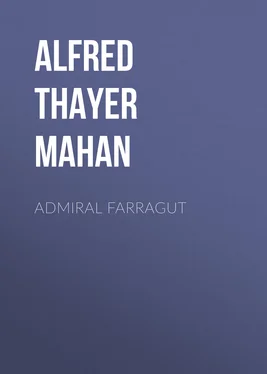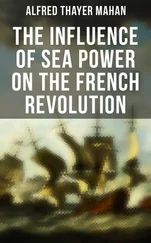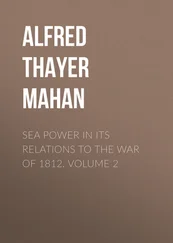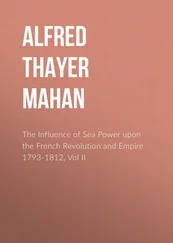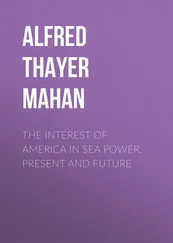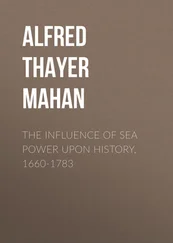Admiral Baudin, however, was thoroughly acquainted with the weak points of the fortress, through information obtained from Madrid; where plans of the works, dating from the times of the Spanish occupancy, were on file. He possessed also two steamers, the first to cross the Atlantic under the French flag, by aid of which, though small and of weak power, he could count upon placing his sailing frigates exactly where he wished them. Finally, the wretched condition of the Mexican forces, demoralized by years of irregular warfare and internal commotion, and miserably provided with material of war, gave additional chances of success.
On the morning of November 28th the two steamers towed the bomb-vessels to the eastern extremity of the reef, a little over a mile from the castle. Next two of the frigates were taken by them and anchored close to the reef, southeast from the works and distant from them half a mile. The third frigate, using her sails alone, succeeded in taking position a little ahead of her consorts. These operations were all completed before noon and were conducted under the eyes of the Mexicans, who were restrained from impeding them by the orders of their Government not to fire the first gun. A delay followed, owing to a flag of truce coming from the shore; but the proposition brought by it proved unacceptable, and the squadron opened fire at half-past two. Between that and sundown the three frigates, aided only by a small corvette which attacked under way, poured upon the castle 7,771 round shot and 177 shell, the mortar-vessels at the same time throwing in 302 bombs. At eight the fire ceased, and negotiations began. The following day, at noon, the castle was delivered into the hands of the French, who placed a garrison in it. "It was high time," said Admiral Baudin; "the wind was freshening, the sea getting up, and the anchors were breaking like glass upon the bottom, composed of sharp rocks." But the loss among the defenders had been so great, and the re-enforcements at hand were so few, that further resistance was impracticable.
The terms of the convention made by the commander of the Mexican forces had stipulated that only a certain number of troops should constitute the garrison of Vera Cruz until the affairs between the two nations were settled; but upon the 4th of December the French admiral learned, to his great indignation, that the Mexican Government had disavowed the action of the general, declared war against France, and was throwing re-enforcements into the city. He immediately took measures to disarm the works which might threaten his fleet at their anchorage, hoping at the same time, by surprising the enemy, to gain possession of Santa Anna, the new commander of the troops and then the most prominent man in Mexico. While the French were making their preparations in secret, Farragut went on shore and called upon Santa Anna, who promised to care for the persons and property of American citizens, adding: "Tell President Van Buren that we are all one family, and must be united against Europeans obtaining a foothold on this continent."
Конец ознакомительного фрагмента.
Текст предоставлен ООО «ЛитРес».
Прочитайте эту книгу целиком, купив полную легальную версию на ЛитРес.
Безопасно оплатить книгу можно банковской картой Visa, MasterCard, Maestro, со счета мобильного телефона, с платежного терминала, в салоне МТС или Связной, через PayPal, WebMoney, Яндекс.Деньги, QIWI Кошелек, бонусными картами или другим удобным Вам способом.
Marshall's Naval Biography, article Hillyar, vol. iv, p. 861.
The writer remembers to have heard in his early days in the service a tradition of a ship commanded by Creighton, which he believes to have been the Washington, and which illustrates the methods by which this extreme smartness was obtained. In each boat at the booms was constantly a midshipman in full dress, cocked hat included, so that no time might be lost in dropping alongside when called away. The full crew was probably also kept in her.
